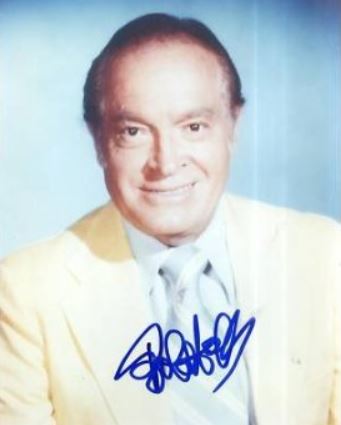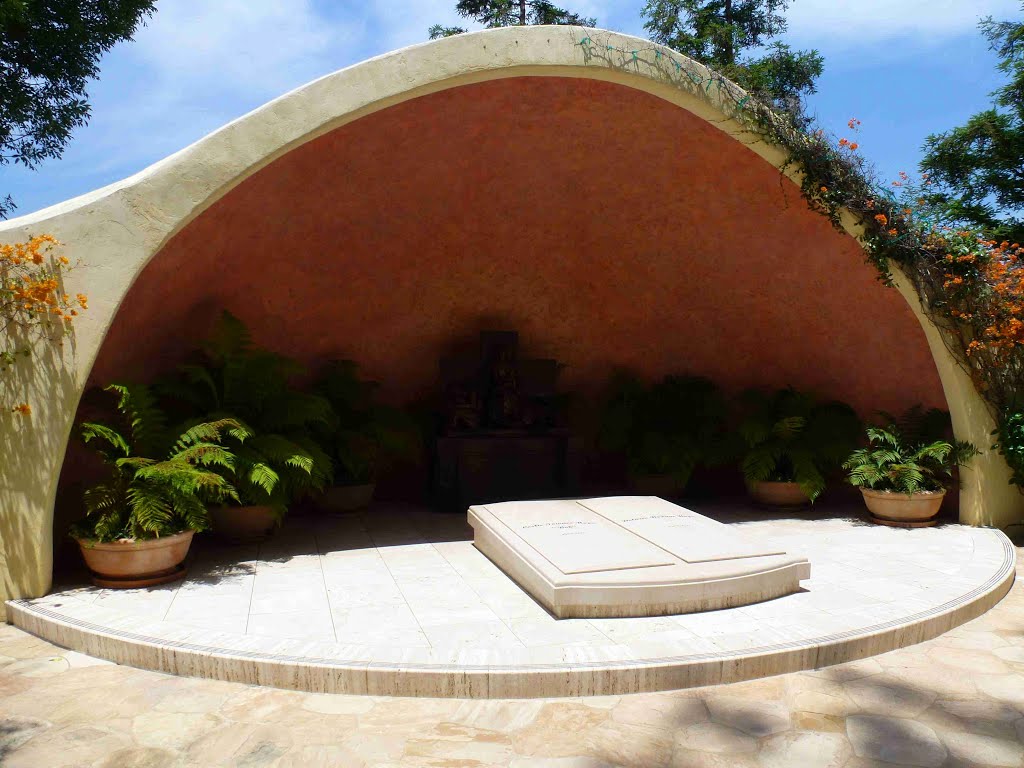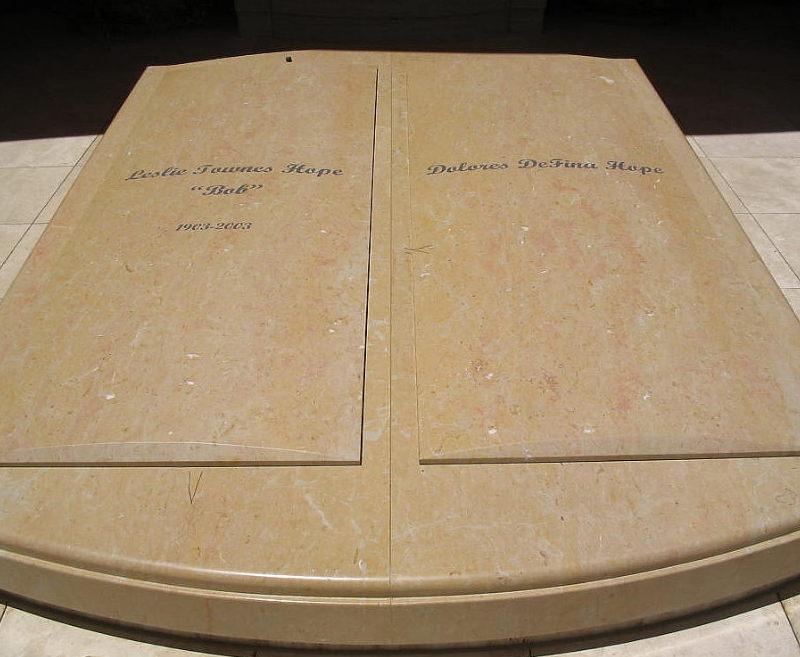Bob Hope (Leslie Townes Hope)

Bob Hope
Hope was born in Eltham, London, the fifth of seven sons. His English father, William Henry Hope, was a stonemason from Weston-super-Mare, Somerset, and his Welsh mother, Avis Townes, was a light opera singer from Barry who later worked as a cleaner. They married in April 1891 and lived at 12 Greenwood Street, Barry, before moving to Whitehall and then St George, Bristol. In 1908, the family emigrated to the United States aboard the SS Philadelphia and passed through Ellis Island on March 30, 1908, before moving to Cleveland, Ohio.
From age 12, Hope earned pocket money by busking (frequently on the streetcar to Luna Park), singing, dancing, and performing comedy. He entered many dancing and amateur talent contests (as Lester Hope) and won a prize in 1915 for his impersonation of Charlie Chaplin. For a time, he attended the Boys Industrial School in Lancaster, Ohio. As an adult, he donated sizable sums of money to the institution.
Hope worked as a butcher’s assistant and a lineman in his teens and early twenties. Deciding on a show business career, he and his girlfriend signed up for dance lessons. Encouraged after they performed in a three-day engagement at a club, Hope formed a partnership with Lloyd Durbin, a friend from the dance school. Silent film comedian Fatty Arbuckle saw them perform in 1925 and found them work with a touring troupe called Hurley’s Jolly Follies. Within a year, Hope had formed an act called the Dancemedians with George Byrne and the Hilton Sisters, conjoined twins who performed a tap dancing routine in the vaudeville circuit. Hope and Byrne had an act as a pair of Siamese twins as well, and danced and sang while wearing blackface, before friends advised Hope that he was funnier as himself.
In 1929, Hope informally changed his first name to “Bob”. In one version of the story, he named himself after racecar driver Bob Burman. In another, he said he chose the name because he wanted a name with a “friendly ‘Hiya, fellas!’ sound” to it.[9] In a 1942 legal document, Hope’s legal name is given as Lester Townes Hope; it is unknown if this reflects a legal name change from Leslie. After five years on the vaudeville circuit, Hope was “surprised and humbled” when he failed a 1930 screen test for the French film production company Pathé at Culver City, California.
Hope continued an active career past his 75th birthday, concentrating on his television specials and USO tours. Although he had given up starring in movies after Cancel My Reservation, he made several cameos in various films and co-starred with Don Ameche in the 1986 TV movie A Masterpiece of Murder. A television special created for his 80th birthday in 1983 at the Kennedy Center in Washington featured President Ronald Reagan, Lucille Ball, George Burns, and many others. In 1985, he was presented with the Life Achievement Award at the Kennedy Center Honors, and in 1998 he was appointed an honorary Knight Commander of the Most Excellent Order of the British Empire by Queen Elizabeth II. Upon accepting the appointment, Hope quipped, “I’m speechless. 70 years of ad lib material and I’m speechless.”
At the age of 95, Hope made an appearance at the 50th anniversary of the Primetime Emmy Awards with Milton Berle and Sid Caesar. Two years later, he was present at the opening of the Bob Hope Gallery of American Entertainment at the Library of Congress. The Library of Congress has presented two major exhibitions about Hope’s life – “Hope for America: Performers, Politics and Pop Culture” and “Bob Hope and American Variety.”
Hope celebrated his 100th birthday on May 29, 2003. He is among a small group of notable centenarians in the field of entertainment. To mark this event, the intersection of Hollywood and Vine in Los Angeles was named “Bob Hope Square” and his centennial was declared “Bob Hope Day” in 35 states. Even at 100, Hope maintained his self-deprecating sense of humor, quipping, “I’m so old, they’ve canceled my blood type.” He converted to Roman Catholicism late in life.
In 1998, a prepared obituary by The Associated Press was inadvertently released on the Internet, prompting Hope’s death to be announced in the U.S. House of Representatives. Hope remained in good health until old age, though he became slightly frail. In June 2000, he spent nearly a week in a California hospital after being hospitalized for gastrointestinal bleeding. In August 2001, he spent close to two weeks in the hospital recovering from pneumonia.
On July 27, 2003, two months after his 100th birthday, Hope died of pneumonia at his home in Toluca Lake, California. His grandson, Zach Hope, told Soledad O’Brien that when asked on his deathbed where he wanted to be buried, Hope had told his wife, “Surprise me.” the Bob Hope Memorial Garden at San Fernando Mission Cemetery in Los Angeles. After his death, newspaper cartoonists worldwide paid tribute to his work for the USO or featured Bing Crosby (who died in 1977) welcoming Hope into heaven.
Born
- May, 29, 1903
- London, England
Died
- July, 27, 2003
- Toluca Lake, California
Cause of Death
- Pneumonia
Cemetery
- Mission San Fernando Rey de Espana Cemetery
- Mission Hills, California



